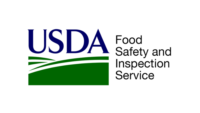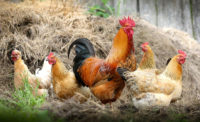The U.S. Department of Agriculture Animal and Plant Health Inspection Service has confirmed the detection of highly pathogenic avian influenza (HPAI) in a dairy herd in New Mexico, as well as 5 additional dairy herds in Texas. APHIS shared on March 29 that its National Veterinary Services Laboratories in Ames, Iowa, was working to confirm presumptive positive test results from New Mexico, Texas and Idaho herds; this announcement is a follow-up to that information.
This marks the first known case of HPAI in cattle in New Mexico and adds to the two detections in Texas that were first announced on March 25. To date, USDA has confirmed the detection of HPAI in dairy herds in Texas (7), Kansas (2), Michigan (1) and New Mexico (1). The presumptive positive test results for the Idaho herd are still pending analysis at NVSL.
APHIS continues to work closely with the Food and Drug Administration and Centers for Disease Control and Prevention, as well as state veterinary and public health officials, to investigate and diagnose activities regarding the illness in dairy cows causing decreased lactation, low appetite and other clinical signs.
USDA and federal and state partners will continue to share additional updates as information becomes available. APHIS has also prepared a Frequently Asked Questions document.
In addition, the CDC has reported that a person in Texas has tested positive for HPAI A(H5N1) virus; the CDC also stated in its announcement that this infection does not change the A(H5N1) bird-flu human health risk assessment for the U.S. general public, which CDC considers to be low. However, people with close or prolonged, unprotected exposures to infected birds or other animals (including livestock), or to environments contaminated by infected birds or other animals, are at greater risk of infection. CDC has interim recommendations for prevention, monitoring, and public health investigations of HPAI A(H5N1) viruses.
Federal and state agencies continue to conduct additional testing in swabs from sick animals and in unpasteurized clinical milk samples from sick animals, as well as viral genome sequencing, to assess whether HPAI or another unrelated disease may be underlying any symptoms.
The NVSL has also confirmed that the strain of the virus found in subsequent states is very similar to the strain originally confirmed in cattle in Texas and Kansas that appears to have been introduced by wild birds (H5N1, Eurasian lineage goose/Guangdong clade 2.3.4.4b). Initial testing has not found changes to the virus that would make it more transmissible to humans. While cases among humans in direct contact with infected animals are possible, this indicates that the current risk to the public remains low.
There continues to be no concern that this circumstance poses a risk to consumer health.
Federal agencies are also working with state and industry partners to encourage producers and veterinarians to report cattle illnesses quickly so that they can monitor potential additional cases and minimize the impact and risk to farmers, farmworkers, consumers and other animals. Producers are urged to work with their veterinarian to report cattle illnesses quickly and practice enhanced biosecurity measures. More information on biosecurity measures is available here.
Source: USDA's APHIS



.jpg?height=200&t=1670643738&width=200)
Report Abusive Comment